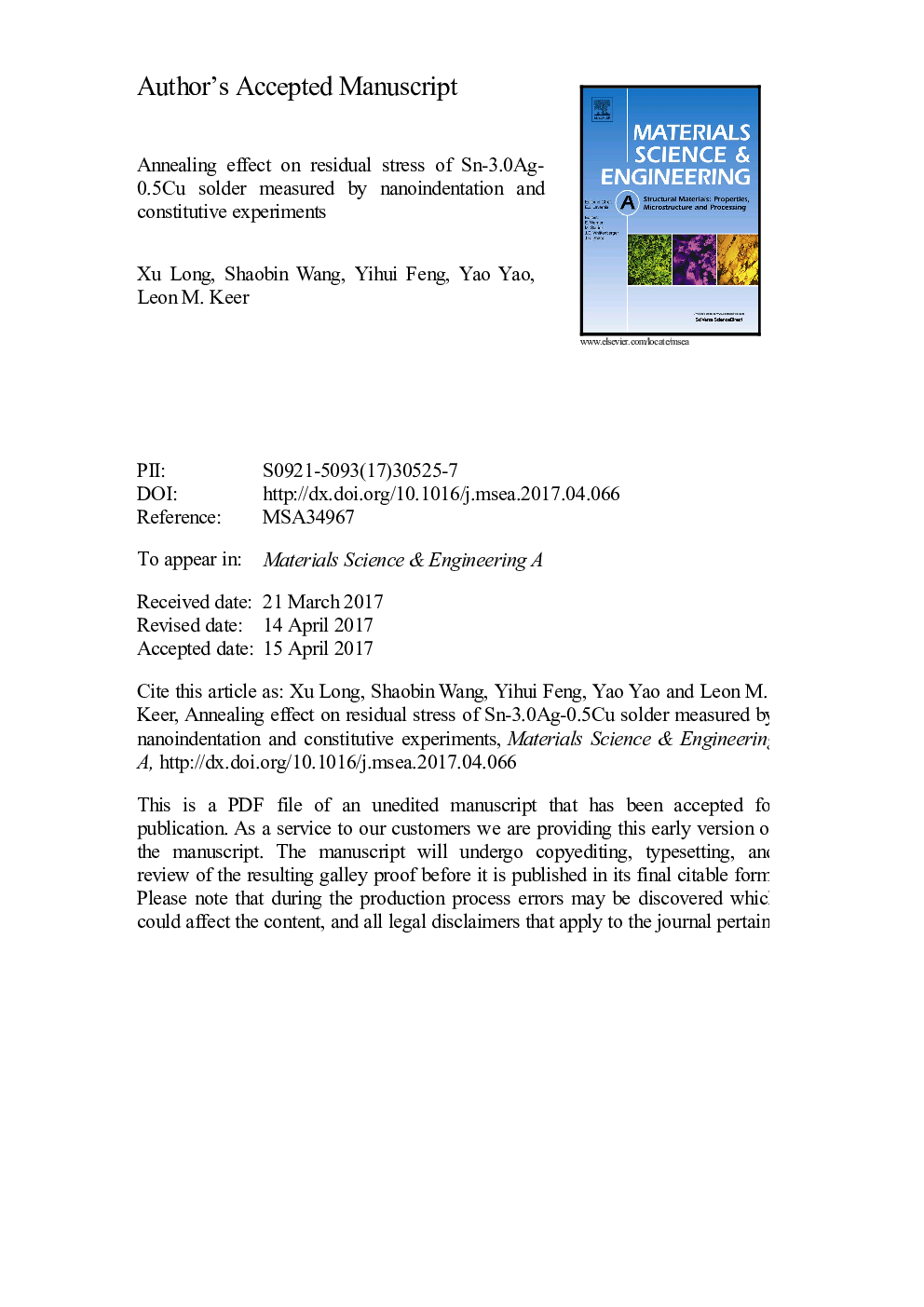| Article ID | Journal | Published Year | Pages | File Type |
|---|---|---|---|---|
| 5455995 | Materials Science and Engineering: A | 2017 | 16 Pages |
Abstract
In this study, residual stress in Sn-3.0Ag-0.5Cu lead-free solder after annealing at varying temperature and duration was investigated by nanoindentation and uniaxial tensile experiments. Based on the unloading response of load-penetration depth, the contact stiffness was theoretically calculated and found to be decreased with increasing annealing duration especially at the annealing temperature of 210 °C. Additionally, the effect of residual stress on constitutive behaviour at strain rates of 1Ã10â3 sâ1, 5Ã10â4 sâ1 and 1Ã10â4 sâ1 was consistently observed. By correlating residual stress and elastic indentation recovery, it was confirmed that greater contact stiffness is induced by greater compressive residual stress. Therefore, the optimal annealing condition of SAC305 solder is 210 °C for 12 h, which is believed to minimize the residual stress and stabilize the mechanical property of annealed solder.
Related Topics
Physical Sciences and Engineering
Materials Science
Materials Science (General)
Authors
Xu Long, Shaobin Wang, Yihui Feng, Yao Yao, Leon M. Keer,
